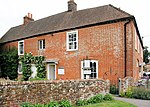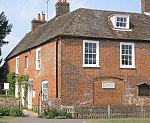Butts Junction
Alton, HampshireRail junctions in EnglandRail transport in HampshireUse British English from March 2017
Butts Junction was a railway junction located in Alton in Hampshire, England. The junction was the location at which the Basingstoke and Alton Light Railway and the Meon Valley Railway diverged from the Mid-Hants Railway which runs from Alton to Winchester. The junction became operational in 1901.All of the Junction's railway lines had closed by 1973, with the Mid-Hants Railway subsequently reopening as a heritage railway known as the Watercress Line in 1977. The location of Butts Junction can still be seen from trains on the Watercress Line, with an embankment tailing off in a different direction.
Excerpt from the Wikipedia article Butts Junction (License: CC BY-SA 3.0, Authors).Butts Junction
Mayflower Road, East Hampshire
Geographical coordinates (GPS) Address Nearby Places Show on map
Geographical coordinates (GPS)
| Latitude | Longitude |
|---|---|
| N 51.140367 ° | E -0.982847 ° |
Address
Mayflower Road
Mayflower Road
GU34 1LJ East Hampshire
England, United Kingdom
Open on Google Maps







